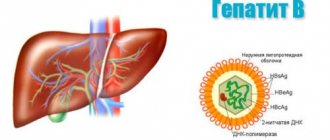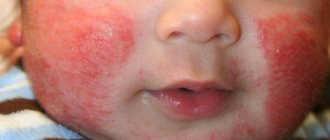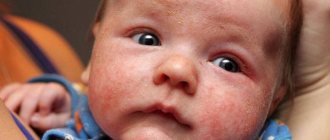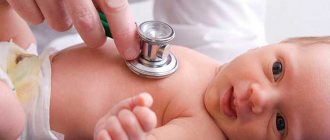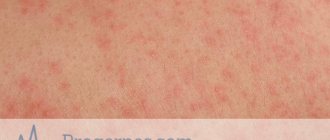Symptoms of an allergy to animal fur
The main misconception of ordinary people is that they consider pet hair to be the cause of allergies. In reality, everything is different: the hair of cats or dogs itself, if it is clean, cannot cause irritation. Allergens are substances that accumulate on it - sweat, saliva, particles of excrement.
It is believed that the most powerful allergens are in the saliva of cats. These naturally clean animals constantly lick their fur. Therefore, the immune system responds to wool.
Symptoms of an allergy to animals are similar to the manifestations of the body's reaction to plant pollen during the flowering period. An allergy is a reaction of the immune system to the presence of any irritants (allergens), which in most cases is cumulative. That is why the manifestations of a long-dormant disease may simply coincide with the appearance of a furry pet in the house.
If we talk about allergies to pets, here are some nuances to consider:
- Both adults and children are susceptible to allergies.
- In children, the reaction to a stimulus occurs faster.
- Symptoms can appear both upon first contact with a pet and after several years of close contact with it.
At the first symptoms of an allergy, you should consult a doctor. Only a specialist can correctly assess the severity of the body’s immune response to an allergen. You can tell if you or your child is having an allergic reaction to animal fur by the following signs:
- feeling of nasal congestion, itching, frequent sneezing;
- watery, clear nasal discharge;
- allergic conjunctivitis (swelling of the eyes, lacrimation, pain, “sand in the eyes”);
- redness and swelling of the skin.
The first symptoms may progress if no measures are taken. The biggest danger of allergies is that symptoms worsen at night1.
Symptoms
Allergic reactions in children can manifest themselves in different ways. The main symptom is a runny nose.
Symptoms of a child's allergy to a cat:
A child becomes allergic to a cat immediately after stroking it, or much later, only after some time has passed. It may well be that the child reacts this way to a certain breed of cat. Often an allergy to fur occurs in animals; it can cause strong allergic reactions in the body, and, for example, cats without hair will be tolerated perfectly.
© shutterstock
How does an allergy to animals manifest?
The clinical picture is not always the same. Manifestations may vary depending on what animal was in contact. In some cases, symptoms begin to appear without direct contact with the animal. It is enough for a person to inhale the air several times in which microparticles of wool or dust are floating. With prolonged contact with the allergen, the following manifestations may occur:
- urticaria (the appearance of a wandering rash or blisters that itch very much);
- bronchospasm (difficulty breathing, feeling of heaviness, tightness in the chest);
- dry cough with a whistling sound, which worsens at night;
- shortness of breath, swelling of the larynx;
A dangerous manifestation of allergies is anaphylactic shock. It can develop immediately, upon first contact with the allergen, and progress at lightning speed. First there is weakness, dizziness, headache and nausea. They are accompanied by skin rashes with itching and rapid heartbeat. At the next stage, the person loses consciousness and his blood pressure drops sharply. Cyanosis (blue discoloration) of the lips and limbs is observed.
Depending on the severity of the condition, warning signs can last from 10-15 minutes to several seconds. In mild and moderate forms, a person has time to describe his symptoms and call an ambulance. In severe cases, anaphylactic shock is fatal.
Important! If you suspect even a mild form of anaphylactic shock, you should call an ambulance. Only a doctor can correctly assess the situation and provide the necessary assistance.
The likelihood of an allergic reaction to animal fur is high in the following cases:
- being in the same room with an animal;
- direct contact with the pet (playing, stroking);
- contact with animal hair left on carpets and upholstered furniture;
- contact with dishes, toys, and the animal's tray during feeding and cleaning.
In adults and children, the signs of the disease are similar. But it is impossible to make an accurate diagnosis on your own - for this you need to undergo appropriate tests and tests for allergens.
It is also important to know that if you suspect an allergy resulting from contact with a pet, you should take your pet to a veterinarian. Often dogs or cats are carriers of infectious diseases that they themselves do not suffer from, but can infect their owners. Another cause of allergies may be infection with helminths. In this case, the cause is the body's immune response to toxins secreted by worms.
The latter option can be safely excluded only if an allergic reaction occurred almost immediately after contact with the animal and provided that there were no similar contacts before 2,3.
Infants are allergic to cats | All about allergies
When a newborn baby appears at home, many things familiar to an adult can become a source of problems. This also applies to our little brothers, contact with their fur often provokes an allergic response in the body. Every parent should know how cat allergies manifest in infants.
Risk factors
There is a widespread belief that an allergy to a cat in an infant occurs due to the animal's fur. This is not entirely true.
The disease is provoked by a protein that is a component of organic secretions (skin, saliva, reproductive secretions, urine and feces). The cat carries their microscopic particles around the house.
Also dangerous for a newborn are allergens that enter the house on cat hair from the street (plant pollen or other pathogens).
INTERESTING! Some breeds are considered the least allergenic. If you have a Siberian cat, a Sphynx cat or an Oriental cat in your home, then the newborn baby is almost 100% protected from allergies.
If an allergy to cats in infants appears immediately after contact with the animal, then the most likely cause is a genetic predisposition. About 15% of children receive the problematic gene from their parents. The anamnesis is complicated when allergies are detected in both parents.
Another factor that provokes a negative reaction from the body is the child’s suppressed immunity. A weakened body is more susceptible to the effects of pathogens carried by a cat. Premature babies are at increased risk.
Symptoms
Under the influence of a pathogenic animal protein, an allergy to a cat occurs in an infant, the symptoms of which can be either single or combined. If you suspect that an infant is allergic to a cat, how does it manifest itself externally?
The main sign, with almost 100% probability, is red spots appearing on the child’s skin. Since a baby's skin is very delicate, an allergic reaction occurs immediately after contact with a cat. The following clinical signs are also observed:
- Rhinitis, constant flow or nasal congestion.
- Sneezing and barking cough.
- Conjunctivitis and lacrimation.
When diagnosed with cat allergy in newborns, how does it manifest itself in severe form? This could be an attack of bronchial asthma, the development of Quincke's edema or anaphylactic shock. The severity depends on the individual reaction of the baby’s body.
If infants develop an allergy to cats, symptoms occur at different times. This may be an immediate reaction, or it may be a gradual appearance of symptoms over several hours. The seasonal nature of the disease is also observed. Spring is the most difficult period, fraught with various exacerbations.
Diagnostics
An infant with symptoms of cat allergy should be evaluated immediately. You should contact a pediatrician who will prescribe a set of diagnostic measures. It includes:
- General examination and medical history.
- General blood tests, biochemical.
- Urine and stool analysis.
Urgent diagnostic measures also include examination by an allergist. The specialist prescribes:
- Differential diagnosis - analysis of venous blood for lg E antibodies, elimination test (removal of the suspected pathogen from the environment of the infant).
- Allergy tests on the epidermis, used in severe cases of the disease. A skin test is performed through microscopic scratches into which a small dose of the allergen is introduced. Swelling or redness at the site confirms the diagnosis.
The entire range of measures taken will allow us to determine whether the baby is allergic to a cat and prescribe the correct treatment.
Treatment and prevention
In order to stop the attack and prevent relapses of cat allergies, the attending physician prescribes antihistamines (Claritin, Suprastin). Glucocorticoids are also used, which help relieve swelling of the mucous membranes. In case of difficulty breathing, Eufillin has an effective effect.
Maintenance therapy is selected in accordance with tests and medical history. A set of measures can be aimed at restoring immunity and eliminating possible complications.
Prevention will help protect the health of the newborn. It is aimed at maximizing the elimination of allergens that the cat carries and consists of the following steps:
- Avoid direct contact of the baby with animals and surfaces where allergens may accumulate.
- Carry out regular wet cleaning.
- Get rid of fluffy rugs and carpets. It is preferable to have linoleum or laminate flooring.
- Wash your pet with antiallergic shampoo.
- Sterilize the animal, since the secretion secreted by the reproductive glands also acts as an allergen.
If a pathological reaction when interacting with a cat persists, despite treatment and preventive measures, then a new home for the pet will be the best solution for preserving the health of your baby.
Source: https://ProAllergija.ru/detskaya-allergiya/kak-proyavlyaetsya-u-grudnichkov-allergiya-na-koshek.html
Allergies to animals in children
Children are especially susceptible to allergic reactions. In a baby, such a reaction can occur within 15 minutes from the start of communication with a cat (dog). Most common symptoms:
- suffocation;
- swelling of the mucous membranes;
- skin rashes;
- sneeze.
You can tell that an allergic reaction has occurred in a baby by looking at its behavior. The child becomes restless, capricious, and sleeps poorly. Children often develop atopic dermatitis, a disease accompanied by numerous rashes mainly on the scalp, face, neck, and less often on the elbows/knees and in the buttock area.
The second name of the disease is childhood dermatitis. It is characterized by peeling skin, micro-ulcers, weeping eczema and severe itching. In some cases, pustules form in the affected areas. The disease can also occur in the absence of contact of the child’s skin with the animal’s fur.
Sometimes babies develop swelling of the mucous membranes. In such cases, the development of laryngeal edema is very likely, therefore, at the slightest suspicion of swelling of the mucous membrane, it is necessary to urgently show the child to a doctor.
Young children are much more susceptible to the problem due to an imperfect immune system4.
Treatment principle
The first step is to accurately identify the cause of atopy. For a few days you need to change your diet, give up all cosmetics and medications that your baby takes. Allergies are often triggered by other irritants, and parents mistake food for the source of irritation. The doctor selects drug therapy. Typically, antihistamines for newborns in syrups and drops are prescribed for these purposes - Zirtec, Suprastin, Fenistil, Cetrin. The dosage is selected by the doctor individually and depends on the weight and age of the child.
Antihistamine ointments are used to treat skin rashes. For babies over three months old, Fenistil-gel, Epidel, Gistan are suitable. Ointments can be used on small areas of the skin up to two times a day.
Antihistamines are unsafe and cause side effects. To avoid complications, you need to trust your doctor in choosing medications for meat allergies in children.
Treatment of animal allergies
If during the examination an accurate diagnosis was established - an allergy to animal fur - the pet will have to be disposed of. Unfortunately, limiting contact with the animal will not solve the problem. If the furry pet remains in the house, microscopic allergenic particles will continue to fly in the air, and it will not be possible to completely protect yourself from them, even by doing daily wet cleaning and ventilating the room3.
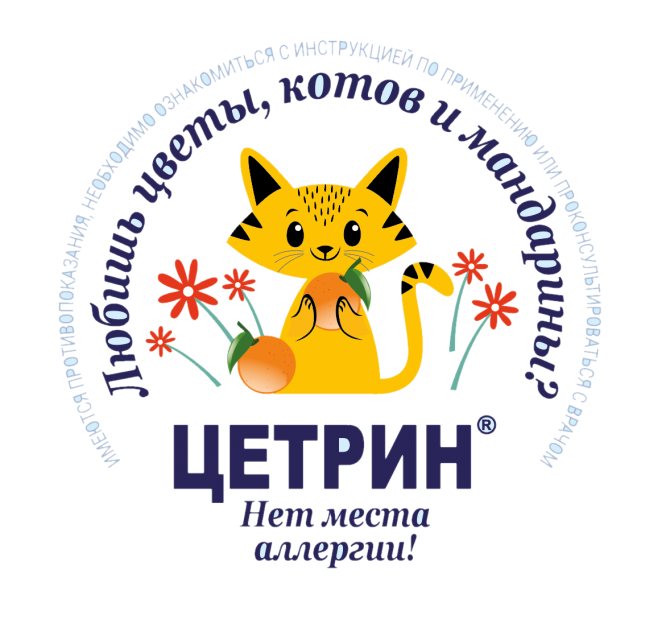
To relieve allergies and their symptoms, doctors advise taking the following types of medications:
- Cetrin® – tablets that block histamine H1 receptors. While taking them, swelling disappears, runny nose and lacrimation stop. The drug acts almost instantly. To get the effect, it is enough to take only one tablet. The drug has a cumulative effect and is not addictive. You can take Cetrin® for a long period of time5.
- Triamcinolone and Budesonide are corticosteroids for topical use in the form of a spray. Soothe itching and relieve redness of the skin.
- Levacabasin and Allergodil are hormonal nasal drops. They block H1 receptors, eliminate the symptoms of allergic rhinitis, relieve itching and swelling of the nasal mucosa.
To learn more about how to deal with animal allergies, you should consult an allergist. All of the above remedies only relieve symptoms, temporarily improving the condition, but do not treat the cause of the disease. Do not self-medicate - temporary relief of the condition will not bring the desired effect, but will only worsen the situation.
Allergies cannot be eliminated forever. But long-term remission can be achieved by using specific immunotherapy SIT. Treatment is carried out in a course, under the supervision of a doctor: the patient is given subcutaneous injections of purified allergen in microdoses for 6 months. During this time, the immune system “gets used” to the contents of the injections and stops responding to the allergen. The effect after such treatment lasts for several years, after which, if necessary, the course of injections is resumed6.
Bibliography
- Allergology and immunology: national guide / ed. R. M. Khaitova, N. I. Ilina. - M.: GEOTAR-Media, 2009. - 656 p.
- Cepel E., Haney M., Miskhakh S., Snowden. Fundamentals of clinical immunology / Translation from English. 5th ed. - M.: GEOTAR-Media, 2008. - 416 p.
- Allergy to pets: features of diagnosis and treatment [Electronic resource]. – Access mode: https://www.lvrach.ru. – (Last access date: 10/1/17).
- Macharadze D. Sh., Sepiashvili R. I. Pilot screening of allergic diseases during clinical examination of Moscow schoolchildren // Allergology and Immunology, 2007, vol. 8. p. 187–190.
- Instructions for use of the medicinal product for medical use Cetrin®. – Registration number: P N013283/01.
- Allergology. Clinical recommendations developed by the RAACI Working Group / ed. R. M. Khaitova. – M.: Farmarus Print Media, 2013. – p. 126 p.
How can children be treated?
Unfortunately, pharmaceutical drugs are not able to completely rid a child of allergies; they are aimed at relieving symptoms. Of course, all medications must be prescribed by a doctor . Even if you purchased tablets, ointment or spray at a pharmacy without a prescription, be sure to consult an allergist.
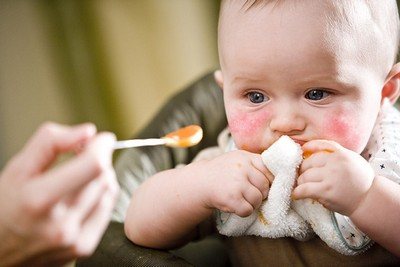
For eczema, rashes and other rashes in infants, 1% hydrocortisone cream is often prescribed.
The drug Zyrtec has proven itself well . It prevents the development of swelling and spasms, and also relieves itching, sneezing and nasal congestion.
Pediatricians often prescribe this medicine to children over 6 months of age as a prophylactic measure before vaccinations. Although Zyrtec is not recommended for newborns and children under six months of age, your doctor may prescribe the drug if allergy symptoms are severe.
Enterosgel is considered a safe product for infants. Polysorb and activated carbon are also suitable. These drugs gently remove the allergen from the body.
To eliminate sneezing, runny nose, and nasal congestion caused by allergens, nasal sprays are used, although most of these medications are intended for children over three years old, so pediatricians recommend rinsing the nose with salt water .
You should be careful when using any medications, and if you experience side effects, you should make an appointment with your pediatrician.
